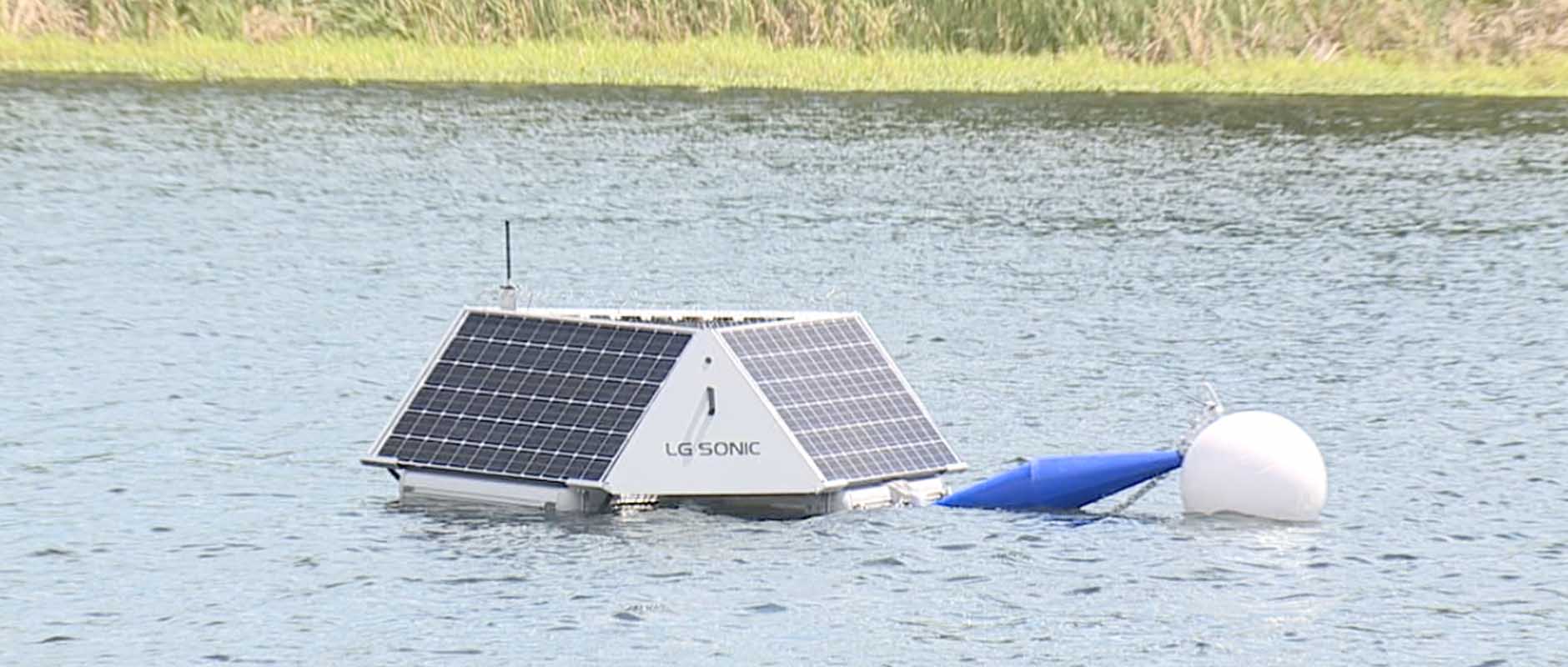Picture and Video: WFTS Tampa Bay
City of Tampa, Florida, has introduced a new method of algae control in the Hillsborough River by installing two innovative LG Sonic MPC-Buoys. These state-of-the-art buoys are designed to reduce blue-green algae growth by utilizing ultrasonic sound waves. The ultrasonic sound waves block algae’s access to sunlight and nutrients, causing the algae to sink to the bottom and die off without releasing toxins.
By eliminating the excessive growth of algae, the technology allows for the restoration of healthy Dissolved Oxygen (DO) levels in the water, which are essential for aquatic life. Consequently, the improved DO levels support the rejuvenation of plant and fish growth, fostering a balanced and thriving ecosystem in the water body.
LG Sonic’s ultrasound is a proven method for treating algal blooms in expansive water surfaces, as demonstrated by its successful implementation by major organizations in the United States, such as American Water, NIPSCO, and the Vallecitos Water District.
While the effectiveness of this technology in moving water bodies like the Hillsborough River is currently being assessed, it has already shown promising results in various settings, showcasing its widespread applicability in addressing algae-related challenges across different water environments.
The LG Sonic buoys have a 2600-feet radius and can project sound waves up to the riverbanks, preventing algae from growing and proliferating. The City of Tampa Water Production Manager, John Ring, stated that this technology would help control algal blooms without using algaecides.
He further explained that the ultrasonic buoys allow the frequency to be adjusted according to the type of bloom or algae species encountered, enabling continuous monitoring and control.
This pilot program, funded by the Florida Department of Environmental Protection, will closely monitor the effects of the LG Sonic buoys on the Hillsborough River over the next two years.
During this period, the city will test the two locations and collect data and samples to compare the ultrasonic method’s effectiveness to the traditional copper sulfate method.
The implementation of the LG Sonic technology aims to maintain high water quality in the city, as John Ring emphasized that this non-invasive method would help ensure a good taste and odor in the water.
The LG Sonic team is excited to see the results of this pilot program and remain committed to providing innovative solutions for algae control and water quality management.
